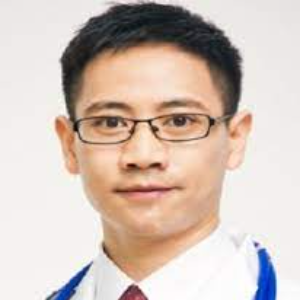Title : Patient specific iPSC disease model identified the pathogenesis of Loeys Dietz syndrome
Abstract:
Objective: To develop a patient specific induced pluripotent stem cells (iPSCs) disease model of Loeys-Dietz syndrome (LDS) and to identify how TGFBR mutation result in dysfunction of vascular smooth muscle cell (VSMC) and implicated in LDS vascular pathogenic course.
Method: Peripheral blood mononuclear cells (PBMCs) were isolated from three LDS patients carrying TGFBR2R193W, TGFBR1R487W and TGFBR1R487Q mutations and one healthy volunteer. PBMCs were reprogrammed into induced pluripotent stem cells (iPSCs) by electroporation with episomal plasmids. The generated iPSCs were induced into contractile VSMC. Patient specific iPSC derived VSMC were then used to study how TGFBR mutation result in structural and functional abnormalities of the derived VSMC and cause LDS vascular pathogenic course.
Result: The generated iPSCs retained the same mutation with PBMCs, presented normal karyotype, expressed pluripotent markers and differentiated into tree germ layers in vivo. iPSCs were induced into VSMC. Immunofluorescence staining, Q-PCR and western-blot analysis showed that iPSC-derived-VSMC highly expressed specific markers including α-SMA, CNN1 and SM22α. The expressions of those specific markers were decreased in LDS-iPSC-VSMC compared with control both on gene and protein levels. Transmission electron microscope showed decreased and abnormal organized myoneme in LDS-iPSC-VSMC. Consistent with reduced expression of VSMC markers and abnormal organized myoneme, VSMC from LDS iPSC showed reduced contractility in response to carbachol stimulation. Furthermore, increased deposition of collagens was confirmed by Q-PCR and western-blot analysis. In addition, Flow cytometry measurement showed more cell apoptosis both in early and late state of culture in LDS-iPSC derived VSMC. Then we detect the activity of canonical TGF-β signalling under normal culture conditions and found defective activation of this pathway in the early stage of culture, but enhanced activation in the late stage. We also found a higher level of TGF-β1 in LDS-iPSC-VSMC medium compared with control medium. Moreover, we examined the activation of non-canonical TGF-β signalling, and western-blot showed that phosphorylation of p38 was persistently enhanced in early and late culture stages while ERK1/2 was decreased in LDS cells compared with control.
Conclusion: Mutations in TGFBR result in abnormal activation of TGF-β signalling pathway and cause structural and functional abnormalities of VSMC which could be a cause of LDS. This in vitro cellular model of LDS may provide a promising platform to investigate disease mechanisms and explore new therapeutic targets.



